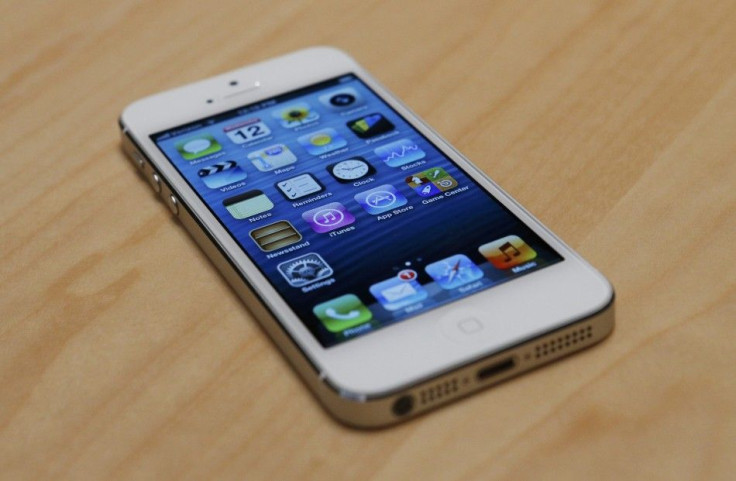iPhone 5 Debut: Apple Expects 10M Sales, Shares Jump

Shares of Apple (Nasdaq: AAPL), the world's most valuable technology company, jumped to new record highs Friday as the iPhone 5 went on sale on four continents and customers stood in line at retail stores for the first models, priced from $199 to $399.
A sell-out is expected by Monday, with as many as 10 million iPhone 5s, Apple's thinnest and lightest-ever smartphone, the latest refreshment of a five-year-old product line that further cemented the Cupertino, Calif., as a leader in mobile platforms and telephony, as well as personal computing and entertainment.
Last week, Apple said it had sold out its entire first stock of 2 million units in its online store. The company said it hoped to satisfy all orders by mid-October.
Customers are able to get the iPhone 5 at 249 U.S. Apple stores as well as from mobile carriers including AT&T Inc. (NYSE: T), the No. 1 telecommunications carrier; the Verizon Wireless unit of Verizon Communications (NYSE: VZ), the No. 2 U.S. carrier; and Sprint-Nextel Corp. (NYSE: S), the No. 3 carrier.
Reports of huge demand helped send Apple shares up to another record, $705.07, before closing at $700.09, up $1.39, bringing the market capitalization of the company to $656 billion. That makes Apple the world's most valuable company, well ahead of Exxon Mobil Corp. (NYSE: XOM), the No. 1 U.S. energy giant, valued around $425 billion.
The overall U.S. market rose slightly Friday. The S&P 500 Index – where Apple accounts for 5 percent of the total value – rose less than a half percent to close at 1,460.88.
Analysts, such as Steven Milunovich of UBS, suggest Apple may sell as many as 52 million iPhone 5 models by Dec. 31. By Monday, the figure may be as many as 10 million. Apple closes out its fiscal fourth quarter on Sept. 29, so the impact is likely to felt more in the coming first quarter, which corresponds to the holiday season.
Apple bought full-page ads in the New York Times, the Wall Street Journal and other leading newspapers Friday showing the iPhone 5 beneath the headline, "The most iPhone yet." It hasn't announced how much it plans to spend on advertising, much of which may not be necessary due to the enormous publicity the company generated over the Internet in the past six months.
To be sure, the Apple ads follow several days of aggressive newspaper advertisements and TV commercials bought by arch-rival Samsung Electronics (Seoul: 005930), which is the No. 1 seller in the rival Android OS market. Samsung previously reporting selling 10 million Galaxy III smartphones in about six weeks.
As well, next month, Microsoft (Nasdaq: MSFT), the world's biggest software company, plans to roll out Windows 8 for phones that's expected to run on new models from Finland's Nokia Oyj (NYSE: NOK) as well as from Taiwan's HTC Corp. (Taipei: 2498), which have announced products that will run the Windows OS.
Apple CEO Tim Cook, in his job only 13 months, said the new iPhone 5 was "the best iPhone yet" when he introduced the product in San Francisco two weeks ago.
Subsequently, the new model won good reviews from critics, although there has been criticism about the new, smaller Lightning connector, which requires an adapter to be compatible with prior-generation chargers; new Apple Maps that replace the former maps from Google (Nasdaq: GOOG), the No. 1 search engine, and continued problems with Siri, the personal voice assistant. The new service also adds content from Yelp (Nasdaq: YELP), whose shares rose to $26.78, up 47 cents.
Apple is also obtaining mapping software from digital map provider TomTom (Pink: TMOAF) of the Netherlands, but hasn't satisfied customers that Apple Maps is either complete or accurate yet. TomTom's U.S. shares rose 2 cents to $4.92.
The iPhone 5 will also have to meet new user demands, especially because it's compatible with the new generation of long-term evolution (LTE) networks installed by the mobile carriers. Verizon Wireless claims to have the biggest, capable of reaching 230 million U.S. customers, followed by AT&T's 74 million. The networks will have to meet heavy new demands for video and content for transmission to iPhone 5 users.
As well, the logistics of orchestrating a product launch of a sophisticated consumer electronics product on a global scale is "like a ballet," said Mohan Ponnadurai, industry solutions director for Sparta Systems of Holmdel, N.J., which services many electronics companies but not Apple.
"Things are a lot more complex than they used to be," the mechanical engineer said, noting that while Apple uses product lifecycle management software from Oracle's Corp.'s (Nasdaq: ORCL) Agile unit, it needs other software to match design tweaks, as well as for testing, shipment and manufacturing, as well as shipment to millions of customers.
The iPhone 5 rollout of 12 separate devices in either black or white translates into 24 separate units, all of which have to function perfectly in consumer hands, Ponnadurai said.
Shares of other known Apple suppliers like Corning Inc. (NYSE: GLW), supplier of the fall-resistant Gorilla glass, rose 12 cents to $13.22, while those Qualcomm Inc. (Nasdaq: QCOM), the supplier of the long-term evolution (LTE) chip in the iPhone 5, fell 8 cents to $64.26
Now that the iPhone 5 is officially on sale, engineers will break it down and identify all the suppliers and parts, announcing estimates for how much the components cost Apple. A preliminary analysis by engineers at UBM TechInsights estimated components cost the company $167.50. Rival IHS iSuppli estimated the cost was $199.
Customers now will be able to make their own assessments.
© Copyright IBTimes 2024. All rights reserved.






















